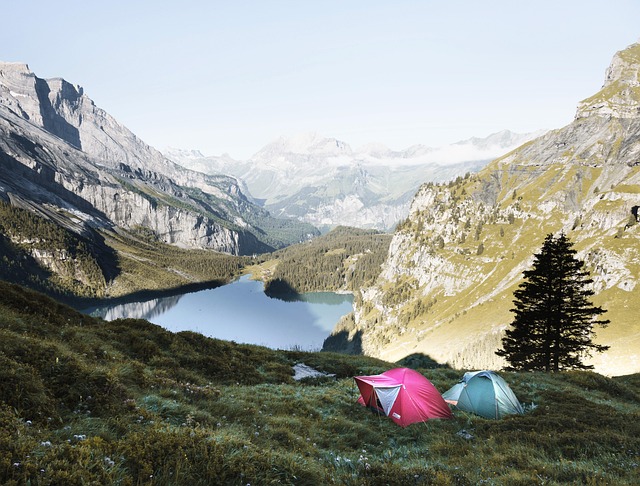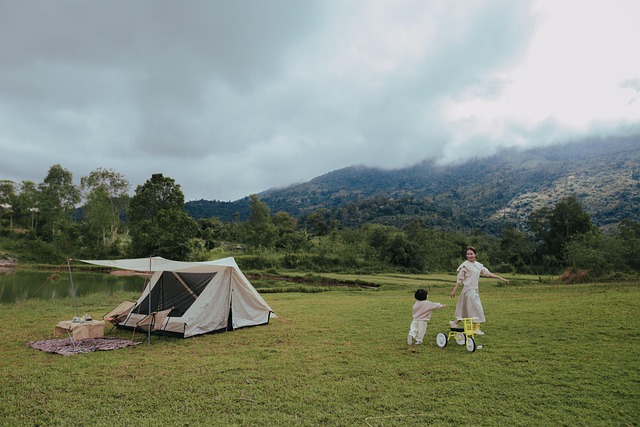Outdoor enthusiasts are increasingly seeking scenic campsites that prioritize eco-conscious practices, driving a trend towards sustainable campgrounds. These campgrounds focus on environmental conservation through waste management, energy-efficient facilities, recycling programs, and off-grid living experiences. They offer not just beautiful locations but also educate visitors about local ecosystems, promoting stewardship and minimal impact. By choosing eco-friendly campgrounds with renewable energy, rainwater harvesting, and 'leave no trace' initiatives, campers can enjoy untouched landscapes while contributing to their preservation for future generations.
In today’s world, eco-conscious travelers are seeking sustainable ways to connect with nature. The rise of eco-friendly campgrounds reflects this trend, offering a greener alternative to traditional outdoor experiences. This article explores the definition of an eco-friendly campground and delves into key practices that foster sustainability. From scenic campsites that blend natural beauty with responsibility, to tips for choosing the most eco-conscious spots, we guide you through navigating this growing movement. Discover how to enhance your outdoor adventures while preserving our planet’s tapestry.
- The Rise of Eco-Conscious Camping: A Growing Trend
- What Makes a Campground Truly Eco-Friendly?
- Sustainable Practices to Enhance Your Outdoor Experience
- Scenic Campsites: Combining Nature and Responsibility
- Tips for Travelers: Choosing the Greenest Camping Spots
The Rise of Eco-Conscious Camping: A Growing Trend

In recent years, there’s been a notable shift in the camping landscape as more and more outdoor enthusiasts embrace eco-conscious practices. The rise of eco-friendly campgrounds reflects a growing trend among campers who prioritize preserving the natural beauty they come to enjoy. This change is driven by a deeper understanding of environmental conservation and a desire to minimize their impact on scenic campsites.
Campers are increasingly seeking out sustainable options that include proper waste management, energy-efficient facilities, and the use of renewable resources. They’re opting for campgrounds that promote off-grid living, encourage recycling, and foster a connection with nature. This shift not only benefits the environment but also enhances the overall camping experience by creating a harmonious relationship between campers and their surroundings.
What Makes a Campground Truly Eco-Friendly?

What makes a campground truly eco-friendly is not just about minimizing waste, although that’s certainly a key component. It’s about creating an experience that respects and preserves the natural beauty surrounding it. Scenic campsites are more than just picturesque; they’re habitats teeming with biodiversity. Eco-conscious campgrounds prioritize leaving no trace, using renewable energy sources like solar panels, and employing sustainable water management practices such as rainwater harvesting. They also offer recycling programs, encourage guests to embrace off-grid living where possible, and maintain trails and facilities responsibly to ensure minimal impact on the landscape.
Beyond these tangible measures, an eco-friendly campground fosters a sense of stewardship among visitors. Educational programs about local ecosystems, wildlife conservation efforts, and initiatives to combat climate change can inspire campers to become advocates for environmental protection. By immersing themselves in these experiences, guests not only enjoy a peaceful retreat but also leave with a deeper appreciation for the delicate balance of nature and a commitment to sustainable practices in their daily lives.
Sustainable Practices to Enhance Your Outdoor Experience

At eco-friendly campgrounds, sustainable practices are integrated into every aspect of the outdoor experience. One key practice is the implementation of renewable energy sources, such as solar panels or wind turbines, to power amenities and reduce carbon footprints. Scenic campsites often prioritize water conservation by utilizing greywater recycling systems and promoting efficient showering techniques among visitors.
Additionally, these campgrounds emphasize waste reduction through recycling programs and the encouragement of a ‘leave no trace’ mindset. They may offer compostable utensils and encourage guests to bring their own reusable items to minimize single-use plastic waste. By adopting such sustainable practices, eco-friendly campgrounds not only preserve the natural beauty of scenic campsites but also educate visitors on the importance of environmental stewardship.
Scenic Campsites: Combining Nature and Responsibility

Scenic campsites offer a unique blend of breathtaking natural beauty and responsible outdoor experiences. When choosing a campsite, opt for those nestled amidst lush forests, by pristine lakes, or in serene mountain ranges. These locations not only provide awe-inspiring views but also encourage visitors to embrace sustainable practices. Responsible camping means leaving no trace—a principle that promotes minimal impact on the environment.
Campers can contribute to the preservation of these scenic sites by adhering to simple guidelines. Proper waste disposal, using designated fire pits, and respecting local flora and fauna are essential practices. Many scenic campsites also encourage guests to engage in conservation efforts, such as participating in clean-up initiatives or learning about local ecosystems. Embracing these sustainable practices ensures that future campers can continue to enjoy the same natural wonders.
Tips for Travelers: Choosing the Greenest Camping Spots

When planning your next outdoor adventure, prioritizing eco-friendly campgrounds is a significant step toward minimizing your environmental impact. Travelers can contribute to conservation efforts by selecting scenic campsites committed to sustainability. Look for campgrounds that employ renewable energy sources, such as solar panels or wind turbines, and promote recycling programs.
Additionally, consider those with efficient waste management systems, including composting toilets and greywater recycling. Choosing green spots often means embracing a more immersive experience—enjoying untouched landscapes, breathing fresh air, and contributing to the preservation of these natural gems for future generations.
